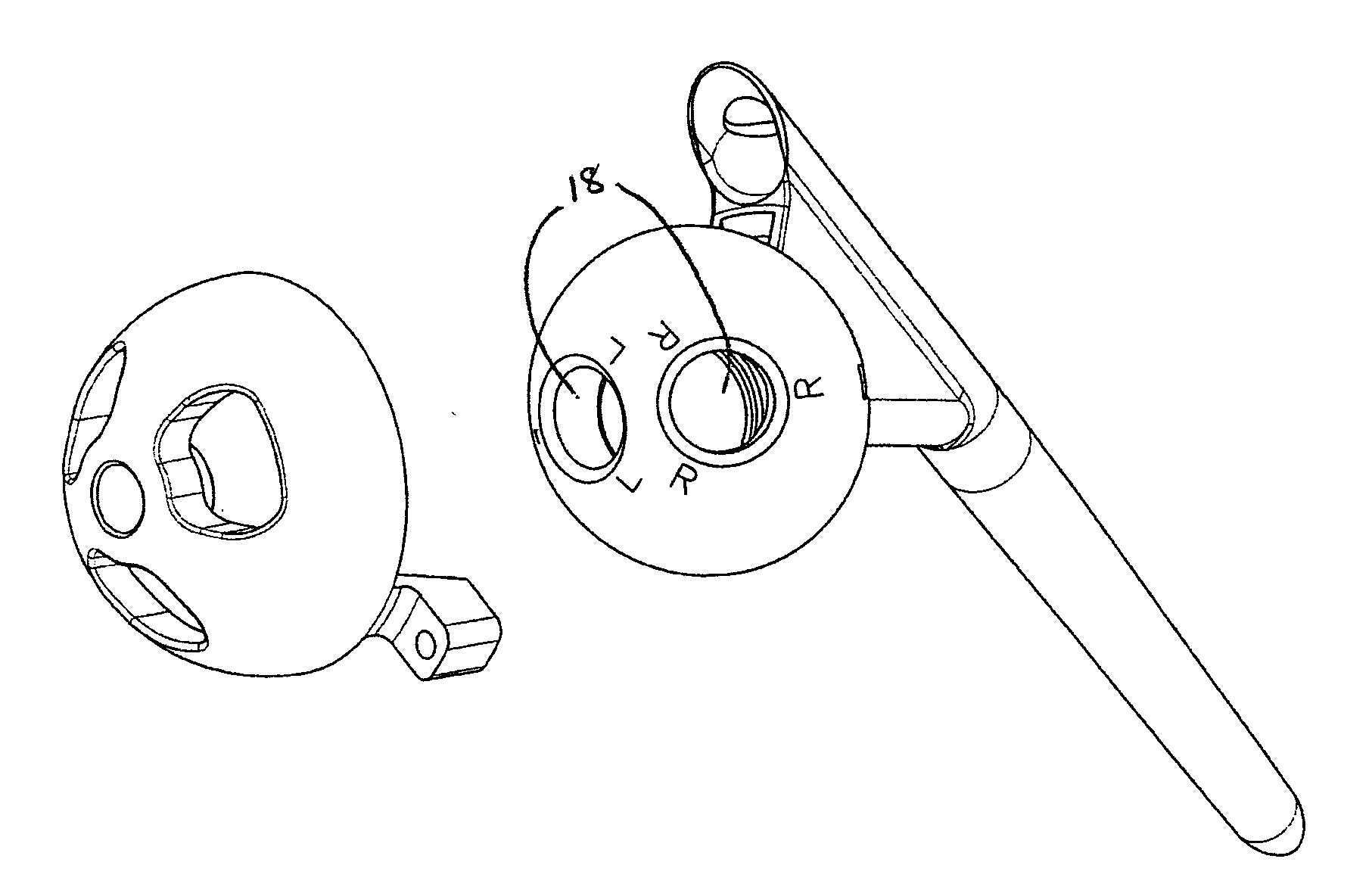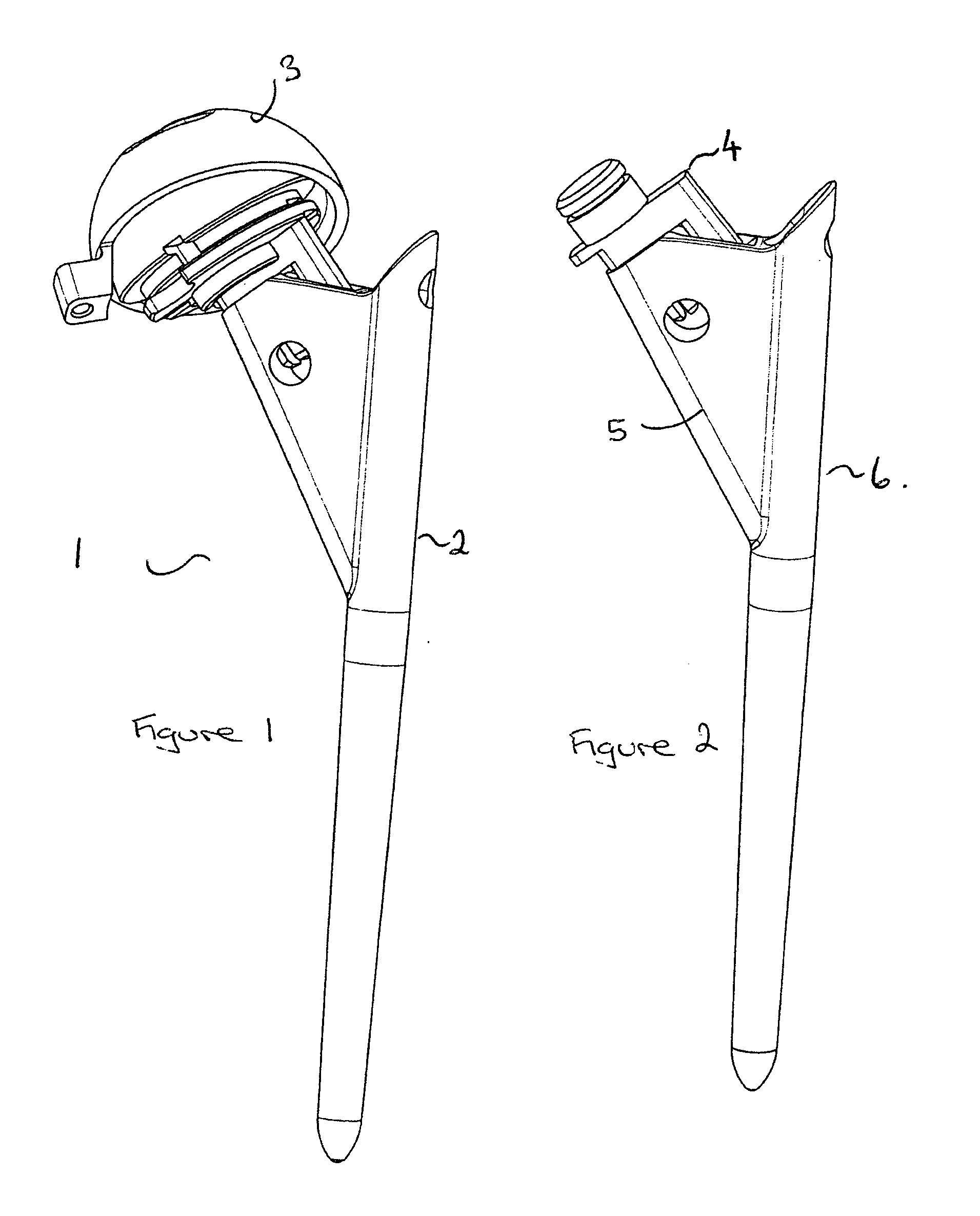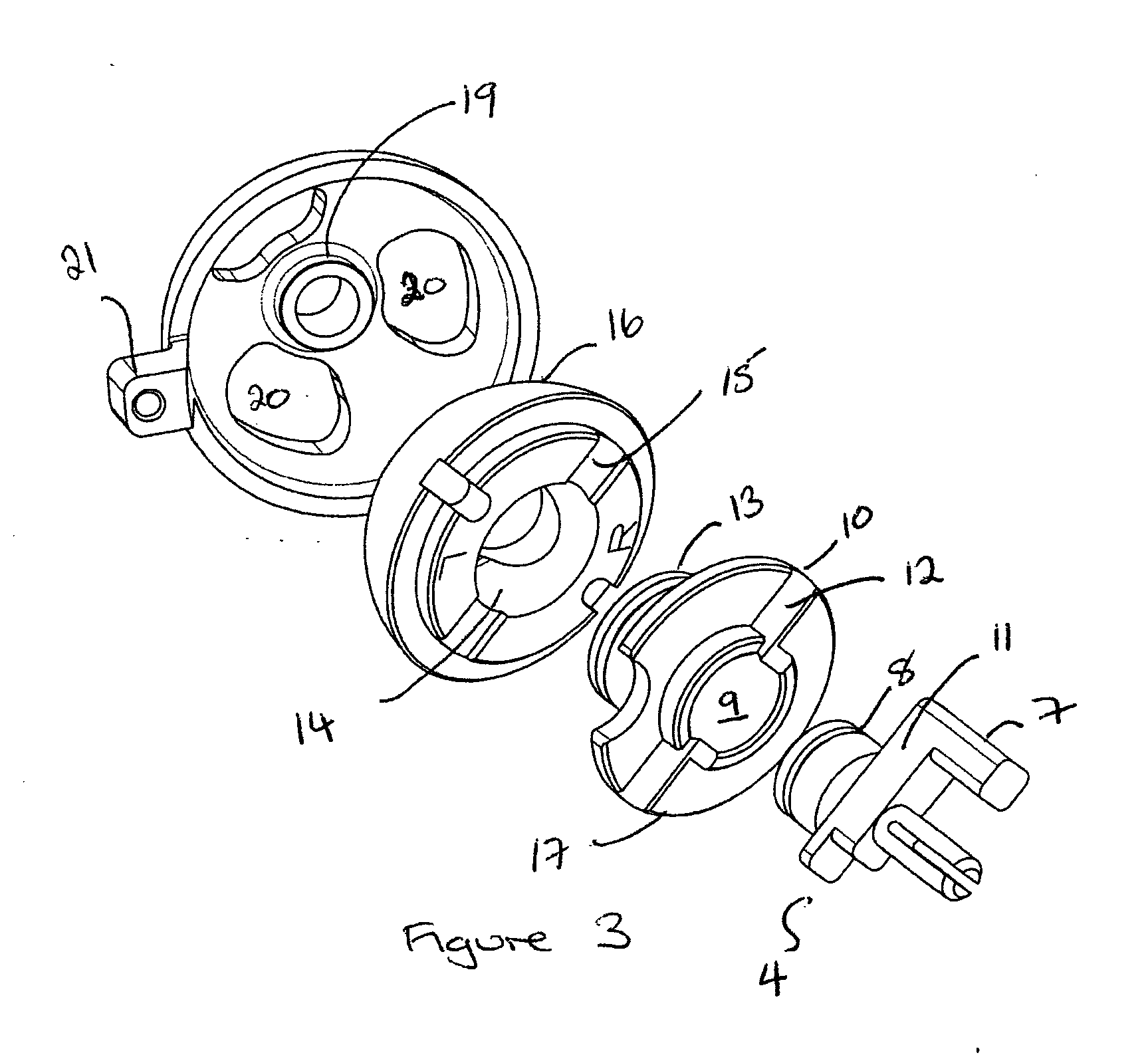Tool
a technology for hip replacement and tools, applied in the field of tools, can solve the problems of reshaping of bone, and affecting the accuracy of angled angles
- Summary
- Abstract
- Description
- Claims
- Application Information
AI Technical Summary
Benefits of technology
Problems solved by technology
Method used
Image
Examples
Embodiment Construction
[0052] As illustrated in FIG. 1, one arrangement of the alignment trial system 1 of the present invention comprises a trial femoral prosthesis 2 and a trial acetabular cup prosthesis 3. The trial femoral prosthesis is modular and two components are shown in FIG. 2. Here a first neck component 4 is inserted in a side arm 5 of the stem component 6.
[0053] The first neck component 4 can be seen more clearly in FIG. 3. It includes a flag 7 which when inserted between the walls of the side arm 5 and prevents the rotation of the component. A collar 8 extends upwardly therefrom to interlock with a corresponding aperture 9 in the second neck component 10. When the collar 8 is inserted into the hole 9 and locked in place, the arm 11 of the first neck component will sit in groove 12 such that mutual rotation of first and second neck components cannot occur. A collar 13 extends upwardly to interlock with the corresponding aperture 14 in the head component 16.
[0054] A groove 15 in the undersid...
PUM
 Login to View More
Login to View More Abstract
Description
Claims
Application Information
 Login to View More
Login to View More - R&D
- Intellectual Property
- Life Sciences
- Materials
- Tech Scout
- Unparalleled Data Quality
- Higher Quality Content
- 60% Fewer Hallucinations
Browse by: Latest US Patents, China's latest patents, Technical Efficacy Thesaurus, Application Domain, Technology Topic, Popular Technical Reports.
© 2025 PatSnap. All rights reserved.Legal|Privacy policy|Modern Slavery Act Transparency Statement|Sitemap|About US| Contact US: help@patsnap.com



